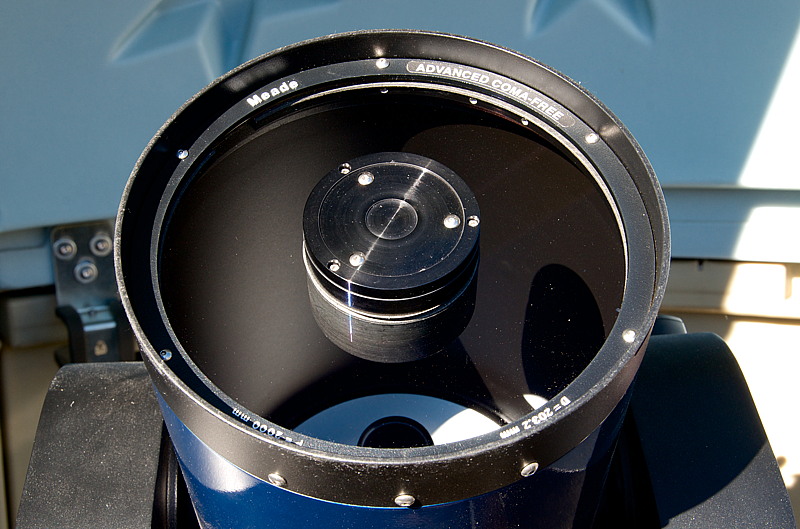
Telescope Corrector Lens Cleaning,
Lunar Pico Mons and Pico β
Posted: 11 January 2014
During the afternoon of Friday, 10 January 2014, I went to the observatory to clean the corrector lens of the 8" LX200-ACF telescope. It had been needing cleaning for sometime, but due to winds, I kept putting it off. Finally, the wind cooperated during the daytime and I was able to clean it. I had last done it in November 2010. This is the pre-cleaning condition of the corrector lens, showing lots of dust and pollen:

I used Doctor Clay's Cleaning Kit to clean the corrector lens. It took about 30 minutes. When done, the lens looked like this:

Ah, much improved!
About 30 minutes after sunset I headed back out to the observatory. There were thin clouds in much of the sky. This was the view as I approached the observatory:

|
Opened: Friday, 10 January 2014, 1815 MST Temperature: 56°F |
Session: 643 Conditions: Thin clouds, calm |
Viewed the moon at 1821 MST, 83X. The mountains in Mare Imbrium that created the "Double-Double Star" effect two nights ago were fully illuminated this night. I began preparations for imaging the moon.
Took this photo at 1831 MST, D7000 DSLR, 1/250sec, ISO 400, 8" prime focus:

Seeing was not very good as thin clouds were now crossing the moon. This cropped, prime focus + 2X PowerMate, shows Pico Mons and Pico β, 1/640sec, ISO 1600:

Compare the above photograph to this iPhone 5s photo from two nights ago, which shows the Epsilon Lyrae "Double-Double Star" effect:

See the report from 8 January 2014 for more on this effect, including a photo of Epsilon Lyrae.
The clouds continued to be in more and more of the sky. By 1840 MST, most of the sky had clouds. I resumed lunar observing, taking a tour of the moon using 222X. At 1900 MST, slewed to Jupiter, which was seen through thin clouds, 222X. The four Galilean Moons were visible, but that was pretty much it for Jupiter due to the clouds. I decided to close up.
|
Closed: Friday, 10 January 2014, 1919 MST Temperature: 48°F |
|
Comments are welcome using Email. Thanks.
Cassiopeia Observatory Home Page